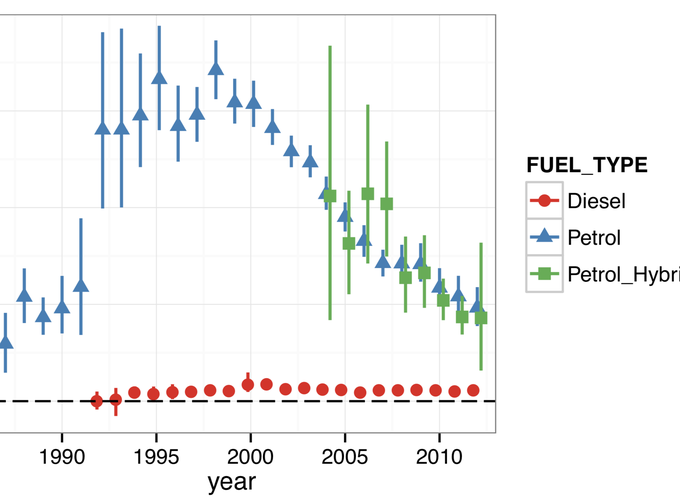New insights from comprehensive on-road measurements of NO$_x$, NO$_2$ and NH$_3$ from vehicle emission remote sensing in London, UK

New insights from comprehensive on-road measurements of NO$_x$, NO$_2$ and NH$_3$ from vehicle emission remote sensing in London, UK
Abstract
In this paper we report the first direct measurements of nitrogen dioxide (NO$_2$) in the UK using a vehicle emission remote sensing technique. Measurements of NO, NO$_2$ and ammonia (NH$_3$) from almost 70,000 vehicles were made spanning vehicle model years from 1985 to 2012. These measurements were carefully matched with detailed vehicle information data to understand the emission characteristics of a wide range of vehicles in a detailed way. Overall it is found that only petrol fuelled vehicles have shown an appreciable reduction in total NO$_x$ emissions over the past 15-20 years. Emissions of NO$_x$ from diesel vehicles, including those with after-treatment systems designed to reduce emissions of NO$_x$, have not reduced over the same period of time. It is also evident that the vehicle manufacturer has a strong in- fluence on emissions of NO$_2$ for Euro 4 and 5 diesel cars and urban buses. Smaller-engined Euro 4 and5 diesel cars are also shown to emit less NO$_2$ than larger-engined vehicles. It is shown that NO$_x$ emissions from u rban buses fitted with Selective Catalytic Reduction (SCR) are comparable to those using Exhaust Gas Recirculation for Euro V vehicles, while reductions in NO$_x$ of about 30% are observed for Euro IV and EEV vehicles. However, the emissions of NO$_2$ vary widely dependent on the bus technology used. Almost all the NO$_x$ emission from Euro IV buses with SCR is in the form of NO, whereas EEV vehicles (Enhanced Environmentally friendly Vehicle) emit about 30% of the NO$_x$ as NO$_2$. We find similarly low amounts of NO$_2$ from trucks (3.5-12t and >12t). Finally, we show that NH$_3$ emissions are most important for older generation catalyst-equipped petrol vehicles and SCR-equipped buses. The NH$_3$ emissions from petrol cars have decreased by over a factor of three from the vehicles manufactured in the late 1990s compared with those manufactured in 2012. Tables of emission factors are presented for NO$_x$, NO$_2$ and NH$_3$ together with uncertainties to assist the development of new emission inventories.